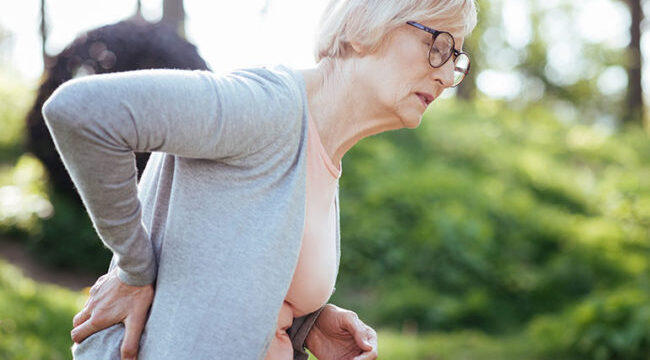 Backaches. Creaky joints. Headaches. Squinting. Bunions. Arthritis. Pain is varied. It can be stabbing, burning, pulsing, etc. It can be continuous or intermittent, distracting to disabling, severe or mild. It can occur anywhere in the body. And it can be unique from person to person.
Backaches. Creaky joints. Headaches. Squinting. Bunions. Arthritis. Pain is varied. It can be stabbing, burning, pulsing, etc. It can be continuous or intermittent, distracting to disabling, severe or mild. It can occur anywhere in the body. And it can be unique from person to person.
Pain becomes more common as we age. The potential for body pains and aches as we grow older should be expected.
This happens because the tendons and ligaments holding our joints together begin to stiffen, to form an almost leathery texture. Osteoarthritis will play its cruel part, chipping away at cartilage. Cells in the body – the ones that made our bodies run so efficiently – also begin to die. This is called apoptosis. Like our bodies, cells start strong, continually dividing and providing, but each division makes the cell weaker.
Our organs depend on these cells. But a cell’s function diminishes with age. The number and strength of cells decrease more and more as we age. Just as our bones grow less dense, it’s a series of radical changes that affect all of us differently, but the result is soreness, aching, slowing down, and pain.
All is not lost. The human body and brain are resilient and, with effort, you can condition your body to manage the bodily conflicts that come with age. You’ve heard the adage before, but it’s the best advice you’ll ever get: Stay active and feel young.
Work with doctors and be around people who, like you, aren’t interested in watching their bodies slip away. Attempt to maintain a realistic and practical level of physical and mental activity. Become someone focused on how to help your body stay healthy. Give up smoking, minimize alcohol intake, change your diet, or do something as simple as utilizing orthotic shoe inserts for arch support to manage foot pain.
The World Health Organization encourages physical movement in all forms, from swimming to household chores. It’s believed muscular and cardiorespiratory fitness can be significantly increased via physical engagement. You can’t go wrong with walking, running, cycling, and general exercise. Stretching along with sleeping on a mattress designed for pressure relief will alleviate the pain associated with constraining muscles.
No one’s saying to become Schwarzenegger. Just get in the habit of pushing the physical envelope to align your thinking and body with the changes. A huge part of the aging process is accepting what’s happening to you and doing all you can to not succumb to it. A 2019 study showed having a positive attitude about growing older can increase health and enhance the odds of longevity by 11 to 15 percent.
If you develop better comprehension for sudden strains when pulling a muscle or a throbbing in your knee, and process that information for treatment, you increase the capacity to mitigate or avoid pain and musculoskeletal problems. Just knowing how to manage sources of discomfort will go a long way to your outlook on aging.
We unfortunately live in a world that loves beauty and youth. We often tie our worth with what we could once do and not relish what we can still accomplish. For endless lifetimes, this has had an impact on our feelings about aging and its subsequent aches and pains. Put yourself on the road to vitality.
And when worse comes to worst, be thrilled about aging—considering the alternative.
